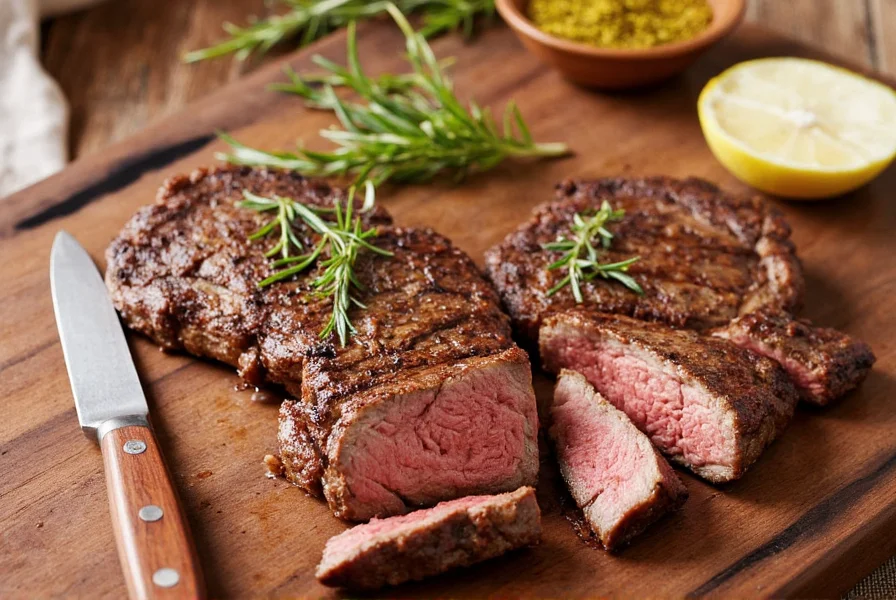Table of Contents
Introduction to Cooking Herbs
When searching for a cooking herbs list, the top 10 essential herbs every kitchen needs include basil, oregano, parsley, cilantro, mint, dill, thyme, rosemary, bay leaf, and chives. These herbs transform simple dishes into memorable meals with unique flavors, aromas, and colors. Whether you're a beginner or experienced cook, understanding their uses, storage, and buying tips is key to maximizing culinary impact.

Top 10 Must-Have Cooking Herbs
These 10 herbs cover global cuisines and everyday cooking needs. Each brings distinct characteristics to dishes:
- Basil – Sweet, peppery, and citrusy; essential for Italian dishes like pesto and Caprese salad.
- Oregano – Earthy and warm; perfect for Mediterranean pizza, sauces, and grilled meats.
- Parsley – Fresh and grassy; versatile for soups, stews, and garnishes.
- Cilantro – Bright and limey; ideal for Mexican salsas, Asian curries, and ceviche.
- Mint – Cool and sweet; enhances drinks, desserts, and savory lamb dishes.
- Dill – Tangy and fresh; best for fish, pickling, and egg-based recipes.
- Thyme – Floral and herbal; classic for roasts, soups, and herbal teas.
- Rosemary – Pine-like and robust; excellent for breads, roasted meats, and potatoes.
- Bay Leaf – Subtle and earthy; used in stews, braises, and soups for depth.
- Chives – Mild onion flavor; perfect for topping omelets, potatoes, and salads.
How to Use Each Herb in Your Kitchen
Master flavor profiles and storage with this comprehensive reference table:
| Herb | Flavor Profile | Best Used In | Storage Tip |
|---|---|---|---|
| Basil | Sweet, peppery, slightly citrusy | Pesto, tomato sauces, salads, Caprese salad | Store in water like flowers; use within a week |
| Oregano | Earthy, slightly bitter, warm | Pizza, pasta sauces, grilled meats | Keep in a cool, dark place; lasts up to a year |
| Parsley | Fresh, grassy, slightly peppery | Soups, stews, meatballs, garnish | Store in water or wrap in damp paper towel; lasts 1–2 weeks |
| Cilantro | Limey, bright, slightly citrusy | Salsa, guacamole, Thai curries, ceviche | Store in water or sealed container with paper towel; lasts 3–4 days |
| Mint | Cool, sweet, slightly spicy | Mojitos, lamb dishes, yogurt dips, desserts | Store in water or jar with water; lasts 1–2 weeks |
| Dill | Fresh, tangy, slightly anise-like | Fish, pickling, eggs, potato salads | Wrap in damp paper towel; refrigerate for 5–7 days |
| Thyme | Floral, earthy, slightly minty | Roasted meats, soups, stews, herbal teas | Store in airtight container; lasts 6–12 months dried |
| Rosemary | Pine-like, robust, woody | Breads, roasted potatoes, lamb, marinades | Refrigerate in water; freeze for long-term storage |
| Bay Leaf | Subtle, herbal, slightly floral | Braises, soups, stews, rice dishes | Dry whole leaves; store in sealed jar for 1–2 years |
| Chives | Mild onion, fresh, delicate | Omelets, potatoes, salads, baked goods | Store in water; refrigerate for up to 2 weeks |
The Ultimate Buying Guide for Herbs
Choosing the right herbs ensures maximum flavor and value. Here’s how to select fresh and dried options:
Choosing Fresh vs. Dried Herbs
Fresh herbs deliver vibrant, bright flavors and are best for raw applications or short-cooking dishes. Dried herbs offer concentrated, robust flavors ideal for slow-cooked recipes like soups and stews. As a general rule, use 1 part dried herb for every 3 parts fresh herb in recipes.
For fresh herbs: Look for crisp, vibrant leaves without wilting or yellowing. Avoid bunches with slimy stems. For dried herbs: Choose airtight containers with clear harvest dates; avoid dusty or faded colors.

General Buying Tips
When purchasing herbs, prioritize quality over quantity. For home gardeners, organic seeds or starter plants ensure pesticide-free growth. At markets, ask about harvest dates—fresh herbs should be recently cut. Online, check reviews for reputable sellers with reliable shipping to preserve freshness.

Pro Tips for Growing and Storing Herbs
Extend herb freshness and flavor with these expert strategies:
- Start Small – Begin with basil, mint, or chives; they thrive in most conditions and are forgiving for beginners.
- Use Quality Soil – Opt for well-draining potting mix with organic compost for healthy growth.
- Water Wisely – Most herbs prefer moist but not soggy soil. Check soil moisture daily; water only when top inch feels dry.
- Prune Regularly – Pinch back tips weekly to encourage bushy growth and prevent legginess.
- Harvest Early – Pick herbs in the morning after dew dries for peak flavor concentration.
- Storage Methods – Tender herbs (basil, cilantro) store in water; hardy herbs (rosemary, thyme) wrap in damp paper towels. Freeze chopped herbs in oil for long-term use.
Frequently Asked Questions About Cooking Herbs
What are the best herbs for Italian cuisine?
Basil, oregano, and thyme are essential for Italian cooking. Basil pairs perfectly with tomatoes in pasta sauces, oregano adds depth to pizza and meat dishes, and thyme enhances roasted vegetables and soups. For authentic flavor, use fresh basil in pesto and dried oregano in slow-cooked sauces.
How do I know when to use fresh versus dried herbs?
Fresh herbs shine in raw dishes, salads, or last-minute garnishes due to their bright, delicate flavors. Dried herbs work best in long-simmered recipes like stews or braises, where heat releases their concentrated oils. As a rule, substitute 1 part dried for 3 parts fresh herb in recipes. For example, use fresh basil in Caprese salad but dried oregano in tomato sauce.
How long do fresh herbs typically last, and how should I store them?
Fresh herbs last 1-2 weeks when stored properly. Tender herbs like basil and cilantro should be placed in a glass of water (like flowers) in the fridge, covered loosely with a plastic bag. Hardy herbs like rosemary and thyme wrap in a damp paper towel inside a sealed container. Never wash herbs before storage—moisture accelerates spoilage.
Can I substitute one herb for another if I don’t have what a recipe calls for?
Yes, but substitutions depend on flavor profiles. Good pairs include: basil and oregano (both Mediterranean), mint and basil (for freshness), thyme and rosemary (earthy notes), and parsley and chives (mild onion notes). Avoid substituting rosemary for delicate herbs like cilantro. Always start with half the amount, taste, and adjust to prevent overpowering dishes.
What’s the difference between herbs and spices?
Herbs come from leafy parts of plants (e.g., basil, parsley), while spices originate from seeds, roots, bark, or flowers (e.g., cinnamon, cumin). Herbs are typically used fresh or dried for subtle flavors, whereas spices are almost always dried and provide intense, concentrated tastes. Both enhance dishes, but herbs are more common in fresh applications while spices dominate in dry rubs and spice blends.
How can I grow herbs indoors successfully?
Place herbs in a sunny windowsill with 6+ hours of direct light daily. Use pots with drainage holes and high-quality potting mix. Water only when soil feels dry to the touch—overwatering causes root rot. Pinch back tips weekly to promote bushiness. For best results, use a balanced liquid fertilizer every 2-3 weeks during active growth seasons.
Which herbs are best for beginners to grow?
Basil, mint, and chives are ideal for beginners. They grow quickly, tolerate varied conditions, and require minimal maintenance. Basil thrives in warm, sunny spots; mint prefers partial shade and consistent moisture; chives adapt to indoor or outdoor settings. Start with small pots to avoid overcomplicating your setup.
How do I dry herbs at home without special equipment?
Hang small bunches upside down in a warm, dry, dark place with good airflow (like a pantry) for 1-2 weeks. Alternatively, spread leaves on a baking sheet in a single layer and place in an oven at the lowest setting (under 180°F/82°C) for 2-4 hours with the door slightly open. Store dried herbs in airtight jars away from light to preserve flavor for up to 1 year.
Conclusion
From the vibrant sweetness of basil to the robust depth of rosemary, mastering these 10 essential cooking herbs unlocks endless culinary creativity. Whether you’re preparing a quick weeknight meal or an elaborate feast, understanding their unique profiles and proper storage ensures every dish shines. Start small, experiment often, and let these herbs transform your kitchen into a world of flavor.










 浙公网安备
33010002000092号
浙公网安备
33010002000092号 浙B2-20120091-4
浙B2-20120091-4